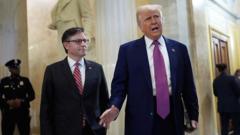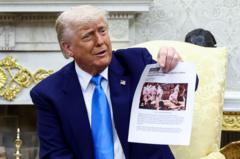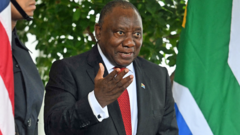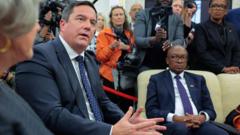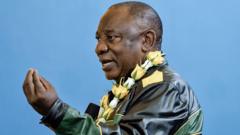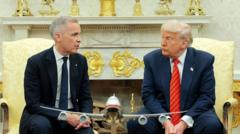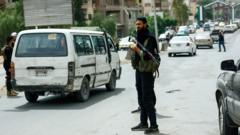Rob Hoatson emphasizes the importance of facts amid a heated Trump-Ramaphosa meeting.
Crosses in South Africa: Trump's Misinterpretation Addressed by Erector
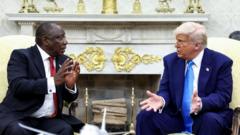
Crosses in South Africa: Trump's Misinterpretation Addressed by Erector
A farmer clarifies Trump's claims regarding a memorial display in KwaZulu-Natal.
The man behind a display of white crosses in South Africa has refuted claims made by US President Donald Trump that the site represented burial locations for deceased farmers. Rob Hoatson, who erected the crosses along a roadside in KwaZulu-Natal in memory of Glen and Vida Rafferty—who were killed on their farm in a 2020 attack—set the record straight after Trump presented images of the site during his meeting with South African President Cyril Ramaphosa.
In the Oval Office, Trump argued that the crosses illustrated a broader narrative about violence against white farmers in South Africa, which he described as systematic. Commenting on the video, Trump stated, “These are burial sites… over 1,000 of white farmers,” as he indicated toward the imagery. However, Mr. Hoatson clarified that the crosses represented a temporary memorial rather than a burial site.
“I have no problem with the video being used without my permission,” Hoatson mentioned, addressing Trump's need for an exaggerated perspective. He affirmed, “It was a memorial, not a permanent structure.” The memorial, which featured over 2,500 white crosses, was erected to honor the Raffertys, and it has since been dismantled.
Amidst the confrontation, Ramaphosa remained composed, acknowledging criminal activity in South Africa but stated that victims included a majority of black individuals. He insisted that the narrative pushed by Trump misrepresents the complexities of South African crime, noting that out of nearly 10,000 murders recorded in recent months, a small fraction involved farm attacks.
While some Afrikaner activists have commended Trump's remarks for shedding light on the plight of farmers, others, including columnist Pieter du Toit, criticized the portrayal of farmer murders as exaggerated. The discourse surrounding these issues reveals the intricacies of crime, race relations, and media representation within South Africa, emphasizing the reality is often more nuanced than international interpretations suggest.
In the Oval Office, Trump argued that the crosses illustrated a broader narrative about violence against white farmers in South Africa, which he described as systematic. Commenting on the video, Trump stated, “These are burial sites… over 1,000 of white farmers,” as he indicated toward the imagery. However, Mr. Hoatson clarified that the crosses represented a temporary memorial rather than a burial site.
“I have no problem with the video being used without my permission,” Hoatson mentioned, addressing Trump's need for an exaggerated perspective. He affirmed, “It was a memorial, not a permanent structure.” The memorial, which featured over 2,500 white crosses, was erected to honor the Raffertys, and it has since been dismantled.
Amidst the confrontation, Ramaphosa remained composed, acknowledging criminal activity in South Africa but stated that victims included a majority of black individuals. He insisted that the narrative pushed by Trump misrepresents the complexities of South African crime, noting that out of nearly 10,000 murders recorded in recent months, a small fraction involved farm attacks.
While some Afrikaner activists have commended Trump's remarks for shedding light on the plight of farmers, others, including columnist Pieter du Toit, criticized the portrayal of farmer murders as exaggerated. The discourse surrounding these issues reveals the intricacies of crime, race relations, and media representation within South Africa, emphasizing the reality is often more nuanced than international interpretations suggest.


